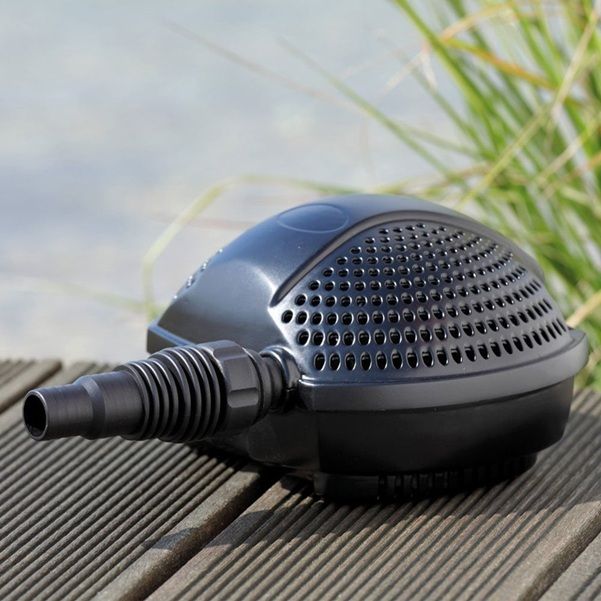The selection process for pond pumps in your garden requires more complexity than one might initially expect. Multiple options exist for pumps, yet homeowners must understand that certain models are incompatible with pond applications.
A suitable pond pump needs to deal with contaminated water streams during continuous operation, which demands customized engineering and durable materials for its creation. The selection process extends beyond the basic comparison of rates and prices because of the demand for proper pumps.
Selecting the right pond pump is crucial for maintaining water circulation, filtration, and stunning water features. During pump selection processes, engineers commonly overlook the fundamental parameter of head height, which correlates to the vertical climb of water needed for its destination.
That Pond Guy, a seasoned pond specialist, advises, “Matching your pump to your head height ensures optimal performance and energy efficiency.”
Understanding Head Height
Head height refers to the vertical lift required to move water from your pump to its output (e.g., a waterfall, filter, or fountain). The greater the height, the harder your pump works, reducing its flow rate.
How to Calculate Head Height:
- Measure the depth of your pump below the water surface.
- Measure the height of the outlet above the water.
- Add these two measurements for the total head height.
For this configuration, where your pump sits one meter below pond water while feeding the waterfall one point two meters up, your total head measurement reaches two point two meters.
Choosing the Right Pump Type
Not all pond pumps handle head height equally.
Here is a breakdown:
1. Filter Pumps
- Best for: Low-to-moderate head heights (0–2m).
- Ideal for: Running filters, small streams, or gentle waterfalls.
Pros: Energy-efficient for 24/7 operation.
Cons: Flow rate drops significantly above 2m.

2. Waterfall & Feature Pumps
- Best for: High head heights (2m+).
- Ideal for: Tall waterfalls, pressurized filters, or elevated ponds.
Pros: Maintains strong flow rates uphill.
Cons: Slightly higher energy use.
Reading Pump Performance Graphs
Manufacturers provide graphs showing flow rates at different head heights.
For example:
- Increasing the height to which water must rise by 2m can decrease the efficiency of an otherwise 10,000 L/H rated filter pump to just 4,000 L/H.
- The 12,000 L/H rated waterfall pump can deliver 8,000 L/H when operated at 3m head height.
Pro Tip: Always check the graph—don’t rely on the max flow rate!
Real-World Scenarios
- Low Head Height (0–1.5m): A filter pump (e.g., Oase Aquamax Eco) is cost-effective.
- Medium Head Height (1.5–2.5m): A hybrid pump balances flow and efficiency.
- High Head Height (3m+): A dedicated waterfall pump (e.g., Oase Aquarius) excels.
Final Tips from That Pond Guy
- Oversize slightly: Account for pipe friction and future additions.
- Prioritize energy efficiency: Filter pumps run 24/7—lower watts save money.
- Avoid pre-filters for filtration: They clog easily; opt for large inlet holes.
Selecting the suitable pond pump according to your head height standard creates a healthy pond while optimising both appearance and energy usage. As That Pond Guy says, “A well-matched pump is the heart of your pond—keep it strong!”
You may also like
-
Top Benefits of Hiring Experts for Vinyl Plank Installation in Florida
-
The Silent Guardians: How High Pressure Valves Protect Lives You Never See
-
Remodeling Roadblocks? Here’s How to Upgrade Your Master Bathroom the Right Way
-
Pests in Car – How to Keep Them Out of Your Vehicle
-
Understanding Key Factors That Affect Your Deck’s Lifespan


